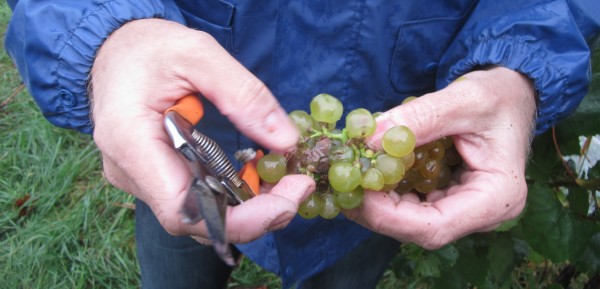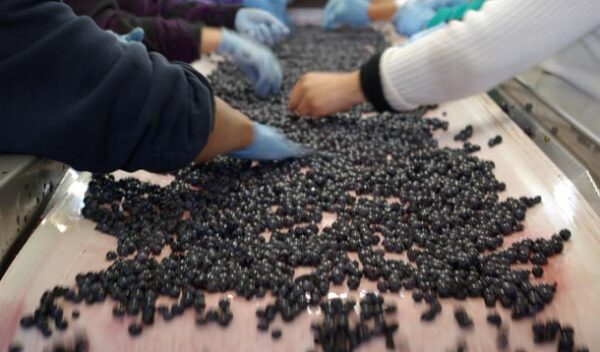In Europe’s more northerly vineyards the harvest is underway as we write. 2013 has turned out to be a problematic year in many places, with yields down for a second or third straight year. In the Loire Valley August hailstorms not only wiped out the current crop of grapes in some places, but damaged vines so badly that their future productivity is in doubt.
In such a year, growers are only too pleased to see the harvest come, knowing that once brought into the winery the grapes are finally safe. But it ain’t over till it’s over as we say here. Rain at harvest can bloat grapes, and humid muggy, weather can generate rot.
If you’re a grape, you may be grateful to have made it through a difficult vintage, but it’s still not a sure thing you’ll make it to the cellar and the cozy confines of a fermenting vat just yet. Rot – a generalized term for conditions in which fruit suffers from an attack by funguses or other microbes – can take hold at the last minute, spoiling individual berries and even entire bunches.
At Turtle Creek Winery in Lincoln Massachusetts last week, harvesters were using their secateurs not just to snip whole bunches, but to trim out single berries that were clearly affected by rot, see below.

After a rocky start the vintage here has turned out to be a successful one, but even in good years conscientious growers will carry out a triage, or vineyard selection, cutting out fruit affected by rot before it gets to the cellar.
This kind of selection costs the property money, of course, but the alternative is including grapes that have been robbed of their bright, fresh fruit flavors and in many cases actually taste mouldy. Their presence has a negative effect on the final product.
Grapes that make it out of the vineyard still haven’t passed the final hurdle, though. They’re be subjected to a final review at a sorting table in the cellar just before being processed, as you see here.

It’s a terribly tedious, labor-intensive process that requires real skill. You have to be able to quickly eyeball the unripe berry, the pulpy, mouldy berry, the stray leaf or stem — but careful work at the sorting table is one of those details that separates run-of-the-mill properties from ones making consistently high-quality wines.